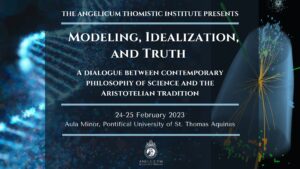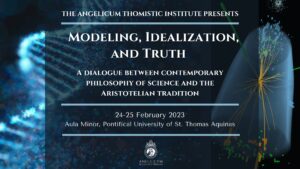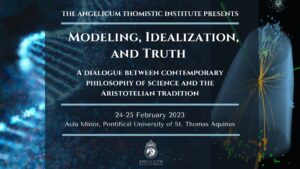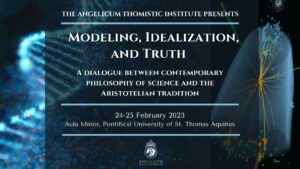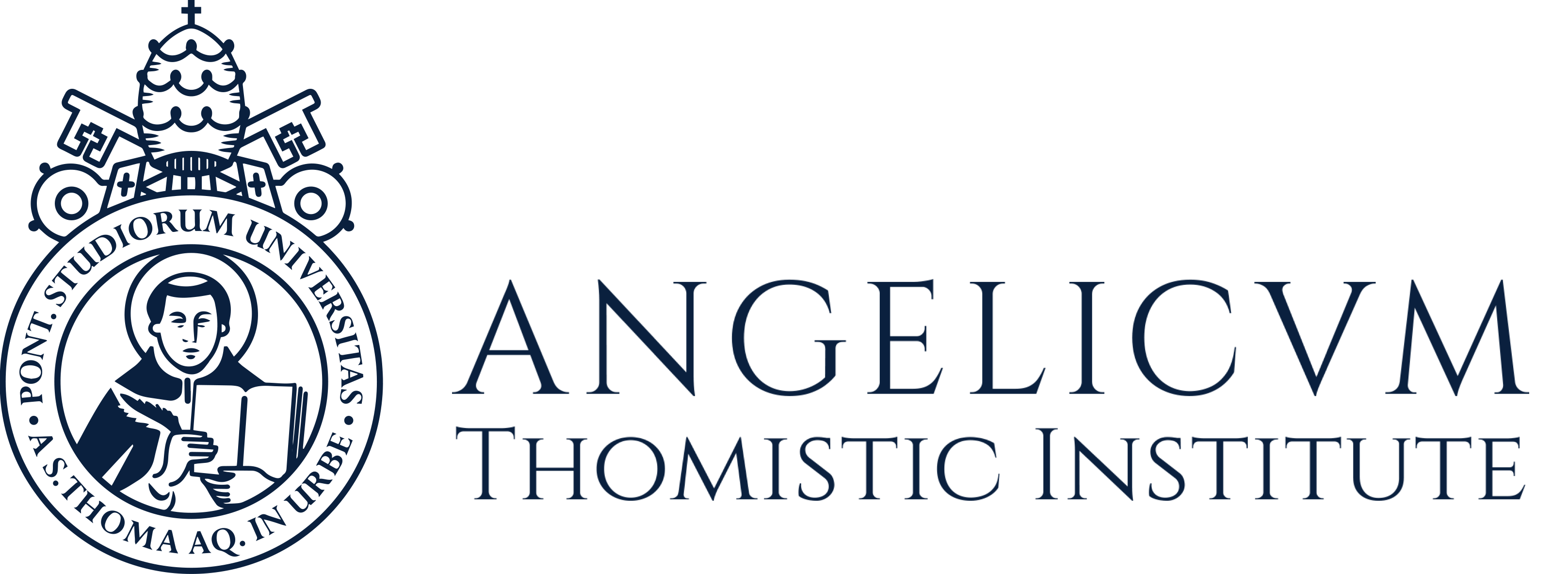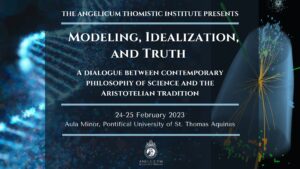Truth, Metaphor, and Representation: Thomistic Reflections
John O’Callaghan
University of Notre Dame
Associate Professor of Philosophy
In contemporary discussions of truths and truth, both culturally and more narrowly philosophical, it is commonly thought that the introduction of images, metaphors, and representations raises a difficulty for characterizing as true what we assert about reality. Most often this difficulty is expressed as calling into question the “literal truth” of the statement. One can extend this worry to scientific discourse insofar as a particular theory goes beyond a formal mathematical structure of statements to employ various kinds of models. Once one gets past the purely formal mathematical features of the theories involved and to their interpretation in a particular domain, one is faced with the question of “literal” truth. The picture that animates this worry seems to be one of statements standing in relation to abstract truths, whatever one might think of the ontology of abstract truths, which truths stand in some relation to reality as such. The use of metaphor, image, and representation in the statements calls into question the relationship of the statements to the truths so conceived, such that one says of them that they are not “literally true.” However, one might ask in what other sense they might be said to be true. Or are we to say that they are literally false, with the result that any statement or set of statements that employ images, metaphors, or representations must be conceived of as literally false, such as, for example, “the poetry of Goethe displays extraordinary depth of feeling,” “Debussy’s Prelude to the Afternoon of a Faun is widely credited with having given birth to modern music.” “Einstein’s general theory of relativity has immense implications for our ordinary conceptions of space and time, particularly the reality of black holes,” and “if the function f(x)=2*x+c is associated with set of ordered pairs of points on a plane it is equivalent to a line of slope 2.” All of these statements appear then to be “literally” false. Perhaps then they are true in some other sense, a “spiritual sense?” An alternative to this way of thinking of the literal truth of statements can be seen in the Thomistic understanding of true statements as the expression of an achievement of the mind in relation to reality, not as standing in a relation to abstracta conceived as “truths.” The goal of this presentation is to sketch that alternative account of truth, a crucial feature of which is that in order to have truth the mind must “possess some feature of its own” in order to be true to reality. The suggestion will be that in its simplest form that “feature of its own” is precisely its representational character expressed in judgment, such that literal truth requires representation and is not undermined by it, representation that often includes the use of images, metaphors, and analogies. There may be “spiritual truths.” But typically our ordinary claims about the world as well as our most complicated scientific theories are not among them. Typically, the latter or quite literally true if true at all.
John O’Callaghan is an Associate Professor of Philosophy at the University of Notre Dame. He earned a BS in Physics from St. Norbert College and an MS in Mathematics from Notre Dame before going on to earn a Doctorate in Philosophy there in 1996. He has been a prolific author with numerous articles and edited volumes on Thomistic Philosophy, and Medieval Philosophy in general, with a particular interest in Metaphysics and Ethics. He is a past president of the American Catholic Philosophical Association, a permanent member of the Pontifical Academy of St. Thomas Aquinas, and the Director of the Jacques Maritain Center at the University of Notre Dame.
Related Content
